You can catch a marshrutka to Karakol from the Western Bus Station in Bishkek. It cost 300 som for the 6-hour drive there, following the northern shore of Issyk-Kul lake. Issyk-Kul was a popular resort area during the Soviet era, and beach resorts line the northern shores. Slightly saline, the lake doesn't freeze over in the winter, which is why its name means "hot lake" in Kyrgyz.
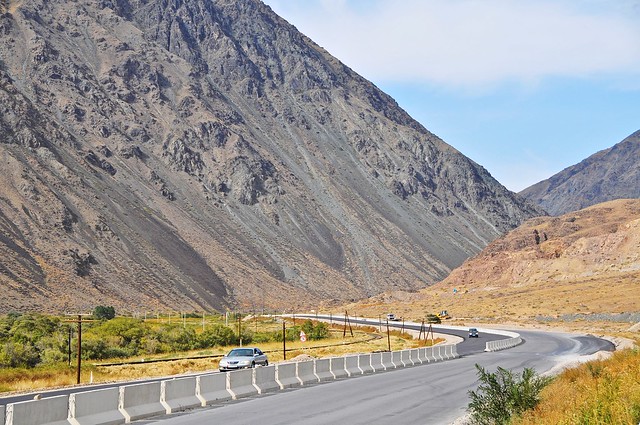 |
| It's a six-hour marshrutka ride from Bishkek to Karakol, broken up by a rest stop at a real, full-fledged restaurant in the lone pass between Bishkek and Issyk-Kul lake. |
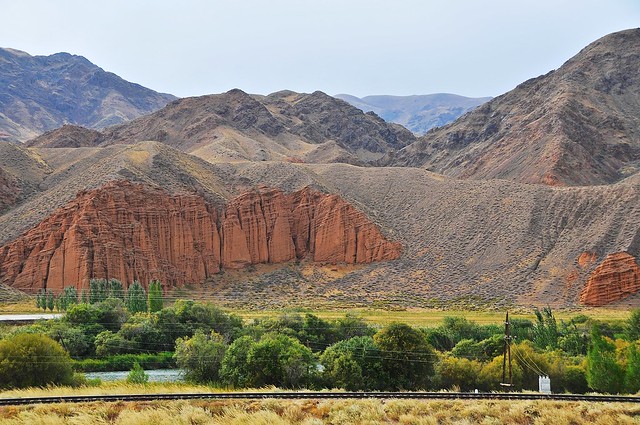 |
| View from the rest stop. |
Because the ride from Bishkek takes six hours, there's not much time to do anything once you arrive in Karakol and find a place to stay (especially since the bus stop is some distance from the center and the CBT office probably isn't open, in case you were hoping to stay at a CBT guesthouse).
I ended up staying at the Neofit hotel, which was 450 som for a single room, including breakfast. Bathrooms were shared, but they had ample hot water and good pressure. I thought it was a good value, but not the best place to stay if you want to meet other people and arrange trekking in the area.
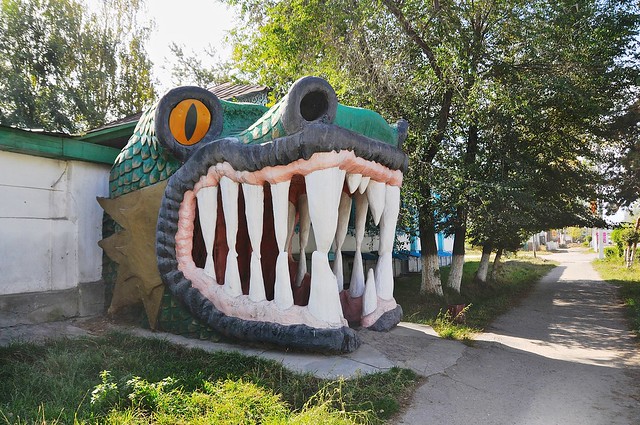 |
| The colourful entrance to the Neofit Hotel's restaurant. The hotel entrance is around the corner on the left. |
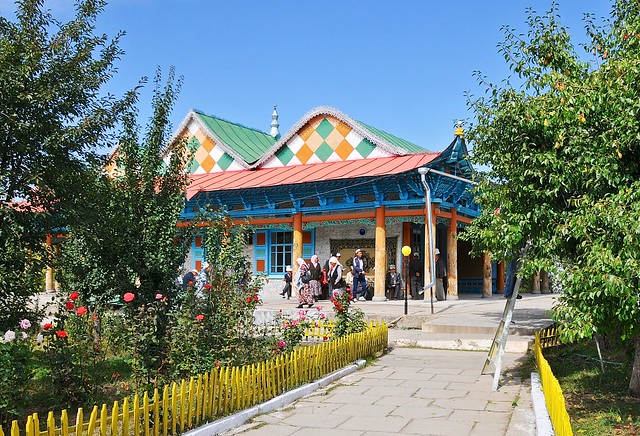 |
| Karakol's Chinese Dungan Mosque. Dungans are the local term for Han Muslims, and are basically what the Chinese would call Hui. The ladder on the right is to harvest the pears ripening on the tree. |
 |
| Most of the worshippers look more Kyrgyz than Dungan/Han to me. |
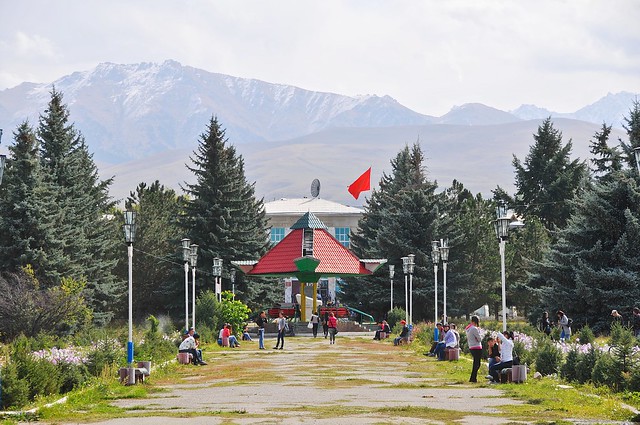 |
| Students line the park in front of the University. I quite like the unkempt look. |
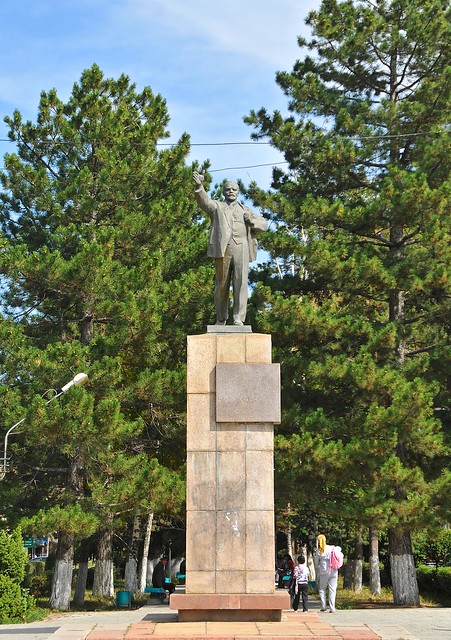 |
| A Lenin statue sits on the eastern side of the University. |
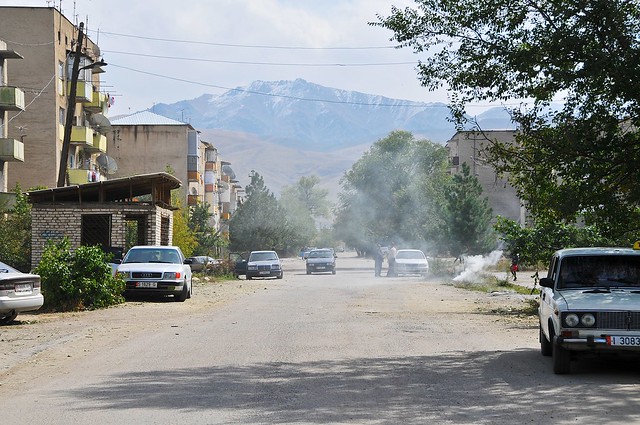 |
| Soviet apartments and dusty streets, with brush burning on the roadside. |
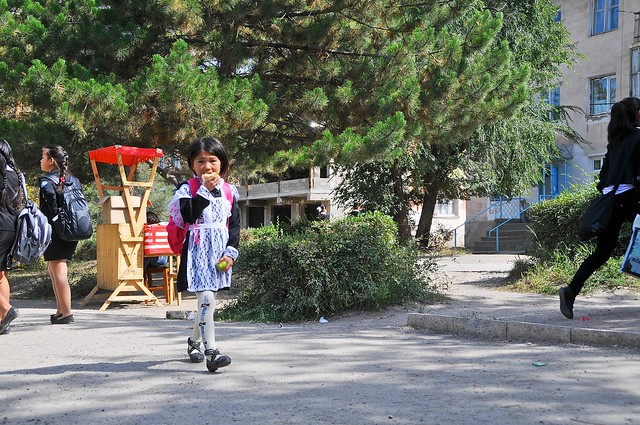 |
| It seems only the youngest students wear the French-maid uniforms; older students wear skirts and jackets. |
 |
| Statue across from the university, at the park entrance. |
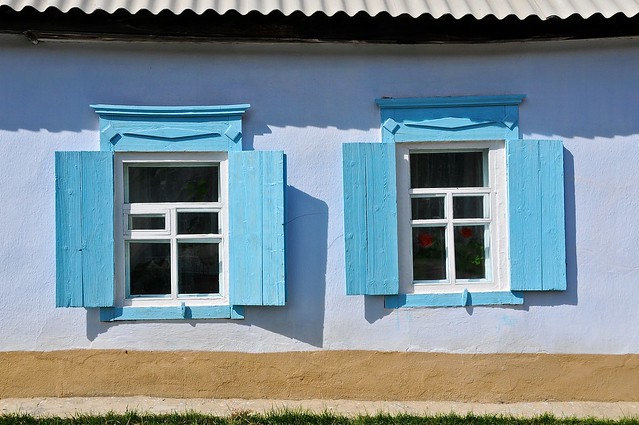 |
| Windows of old Russian-style houses that dot Karakol. |
 |
| Some are in need of restoration. |
There's not a lot to do in Karakol, as it's mainly used as a base for exploring the nearby mountains. Apart from wandering around the city, taking in the old Russian architecture, the Dungan Mosque, and the wooden cathedral, you have plenty of time to wander around. At the southern edge of the city I happened on a monument (the Soviets were very big on monuments to all sorts of people and events) in Pobedy Park, and spotted a red squirrel running around. I stopped to try and take some pictures, and a couple of passing schoolboys stopped to wonder what I was taking pictures of, and help track the squirrel for me as it ran around in a tree and across the park. I took a couple of pictures of them, then offered to let them use my camera to take pictures of each other.
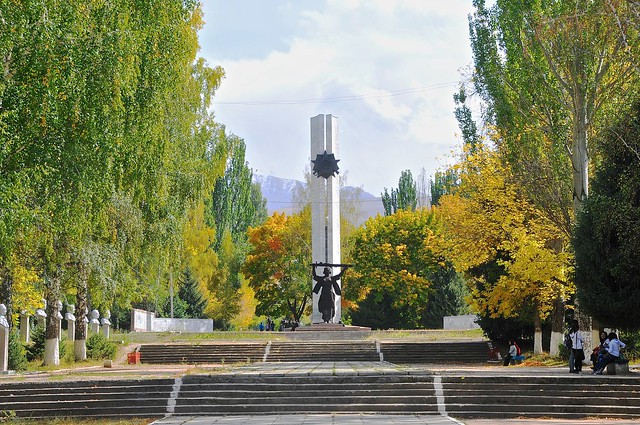 |
| The monument in Pobedy Park. |
 |
| When I took their pictures they immediately went into these formal poses, as though for a school portrait or something. |
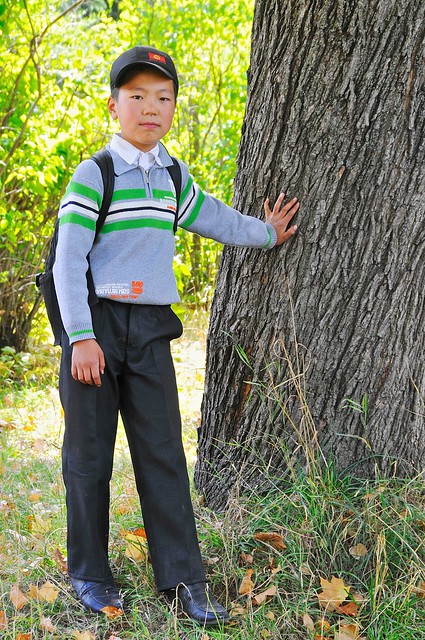 |
| It's like they had been trained to pose this way. |
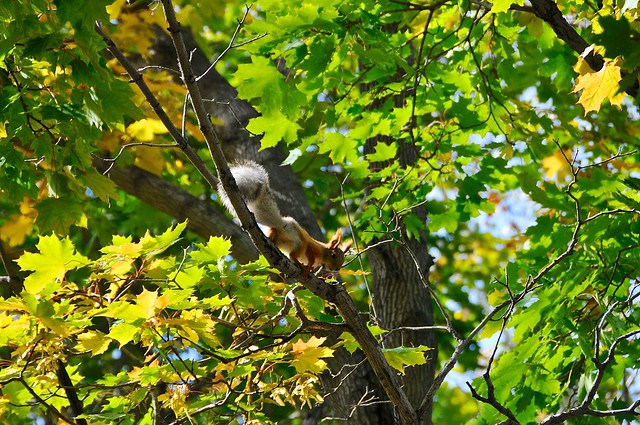 |
| The elusive squirrel. |
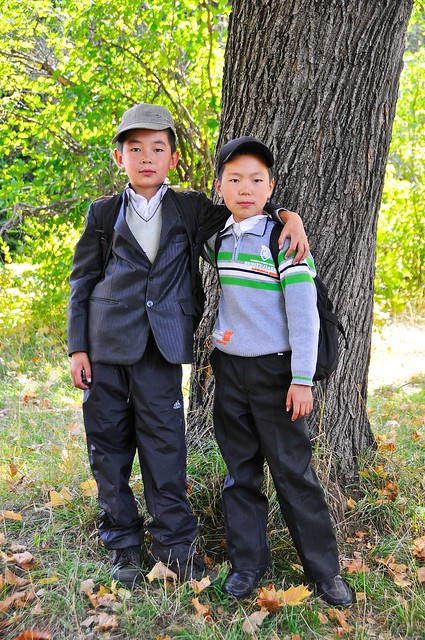 |
| The two kids, still pretty formal. |
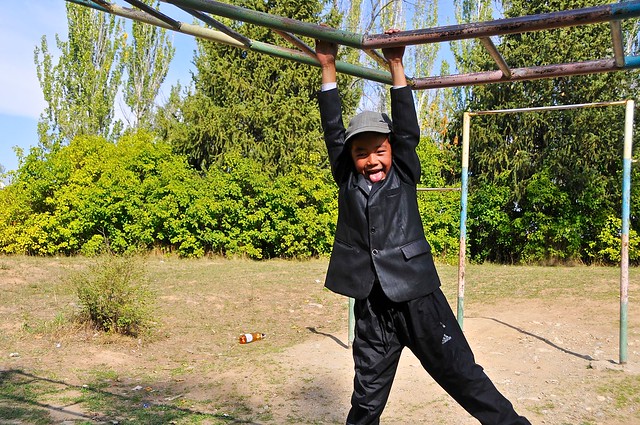 |
| We followed the squirrel to a nearby playground, and then the kids started relaxing more as they took each other's picture. |
 |
| They were pretty nimble. |
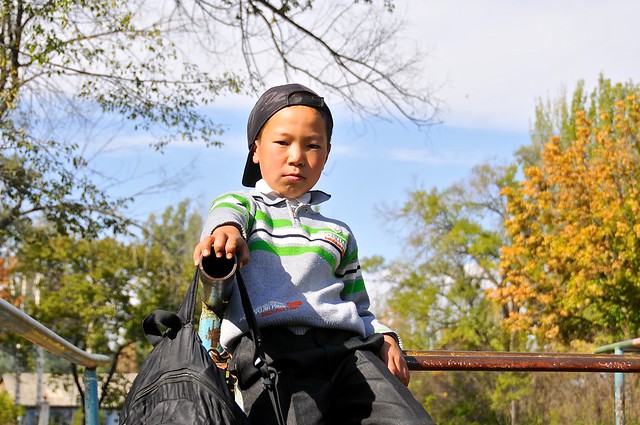 |
| O.G., Kyrgyz style. |
 |
| It's surprising just how much better one of them was as a photographer, and how one couldn't even keep the camera straight. |
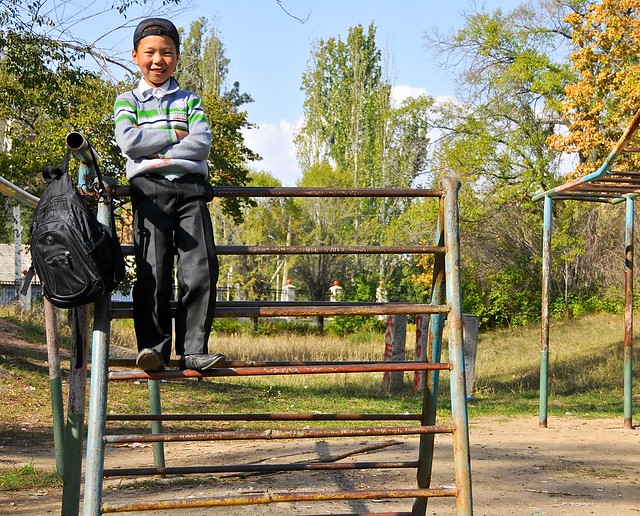 |
| Just chilling. |
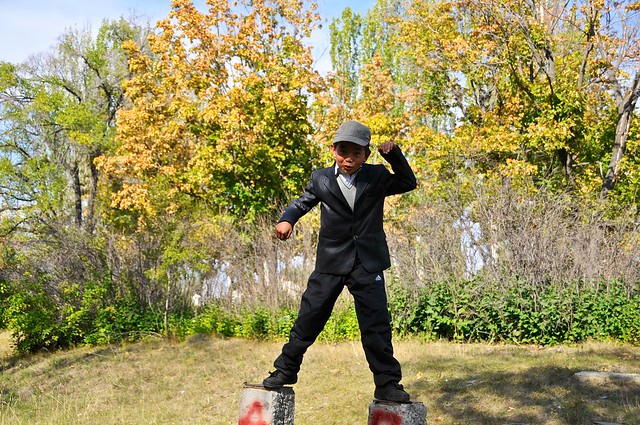 |
| He did a half "robot," half "walk like an Egyptian" dance along the concrete piles, then jumped off the end. |
 |
| I was also conscripted into the jumping game, though out synchronization was off. |
After about an hour and a half of playing with these kids and letting them take pictures, I told them I would have to leave in 10 minutes. They took some more pictures and then were very appreciative when I had to leave, repeatedly thanking me in Russian as they continued on their way home.
I met some people who were surprised I would let locals or kids use my camera, but in situations like this there was basically zero risk of theft and so long as they used the camera strap I wasn't too worried about them damaging it any more than I would. And for someone like me who is naturally reticent, it's a good ice-breaker (especially with kids). So long as you use a bit of common sense, I don't think it's really that risky to let people use your camera.
 |
| Old Russian building and statue on the way back north to the Cathedral and center of town. |
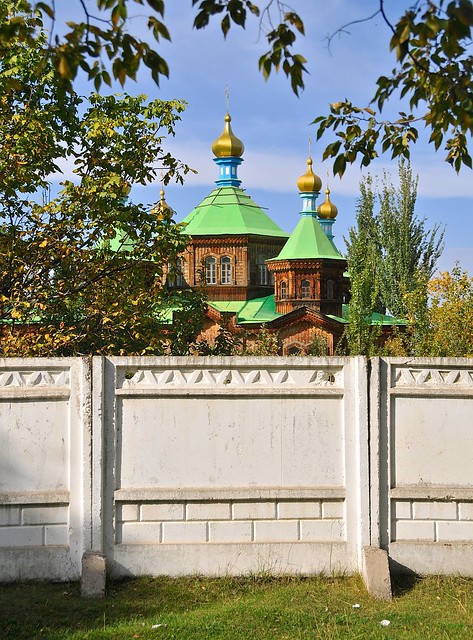 |
| The Russian Holy Trinity Cathedral, from the south. |
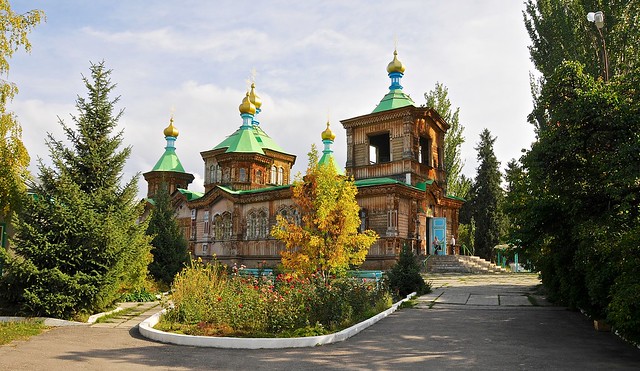 |
| The Cathedral from the entrance on the north side. It's a quaint old wooden building in a quasi log-cabin style, with green tin roofs probably meant to look like copper. |
 |
| The onion domes were torn down in the Soviet era and the building was converted to a meeting space, before being restored to its current condition. |
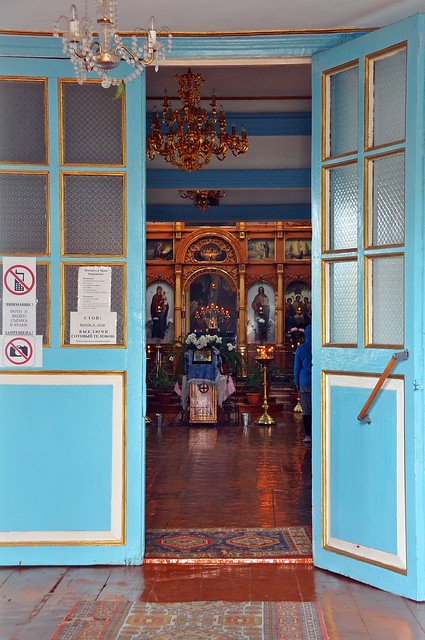 |
| A peek inside the Cathedral. |
 |
| Dome and eaves carvings. |
 |
| The grounds south of the church are filled with apple trees that were positively drooping under the weight of their fruit. |
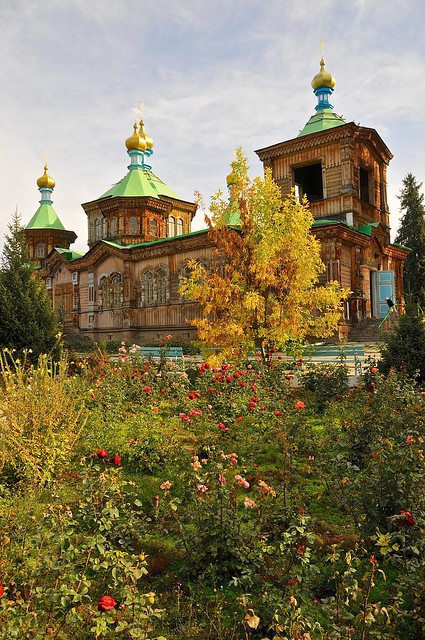 |
| In the front, roses provide the red. |
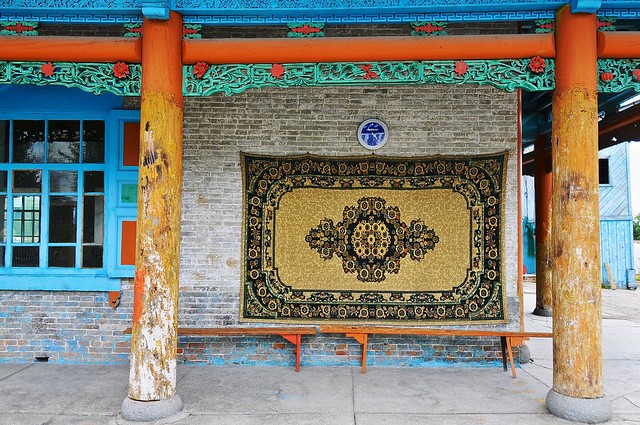 |
| Benches outside the Dungan Mosque and a cheap factory-made carpet. |
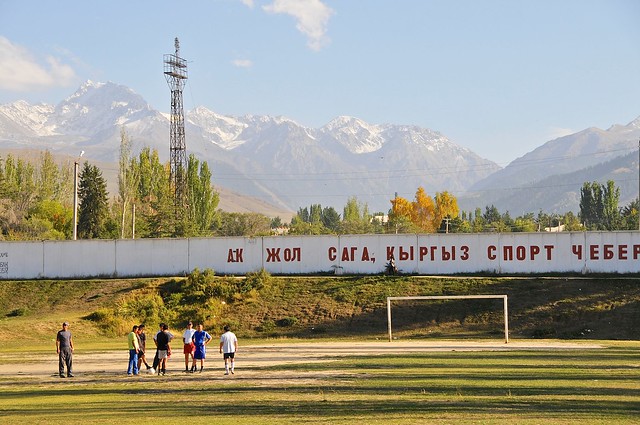 |
| Lovely views from the soccer pitch. |
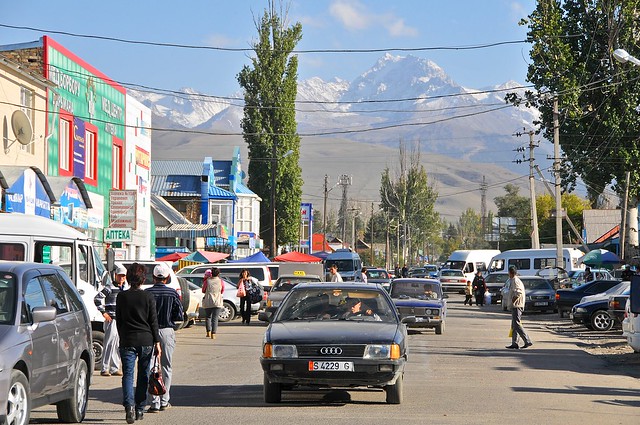 |
| The bazaar is crowded and chaotic. The best part is the open-air green
market to the north, which is basically just streets full of people
selling fruits and vegetables from open sacks. |
I don't buy much, mainly because I'm cheap as fuck and paranoid that I'm getting ripped off, but I did visit the
One Village, One Product store, which is centrally located along the main stretch of Toktogul street. They have lots of locally-produced foods like jams and honeys that you can sample before you buy, as well as lots of handicrafts (including things made to western style with locally-produced wools and felts). I ended up buying some really great black currant jam. I love black currant, but it's really difficult to find blac-currant stuff in North America. When it ran out I tried to get similar black-currant jam in markets throughout Central Asia, but never found any (most commercial jam is foreign made).
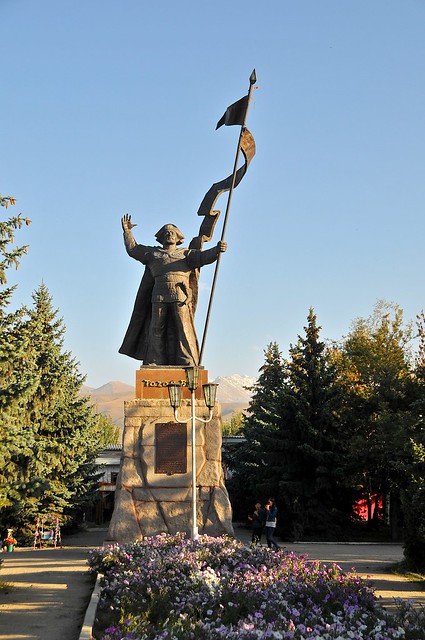 |
| The Taygaytay statue in the middle of "downtown." |
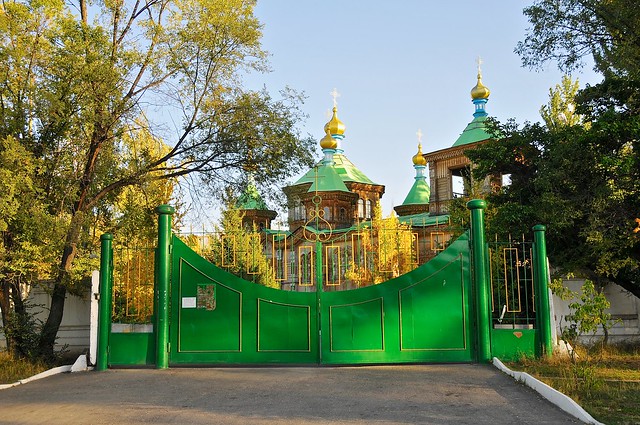 |
| The cathedral is usually closed. |
I ended up spending more time in Karakol than was really warranted. Maybe two nights, one day would be enough time to see everything in town and organize any trips or treks you wanted to make. The problem is that it's a little difficult to make plans and get things sorted out, and to be honest the CBT office here isn't as helpful as it could be. They were closed most of the time I went there, and when I did find the doors open there was no one inside. They had a couple of signs on nearby sights, but no real help from anyone.
On the other hand, there's another tourist information office, TIC, just across the way, but although they are staffed by young and friendly students, they don't seem to actually know that much about things independent travelers might want to know. Even though I visited both places, I still had to figure out how to get to Jeti-Oguz on my own. I tried both the bazaar where share taxis and marshrutkas are said to roam, but eventually caught my marshrutka from what the 2014 LP lists as the Southern Bus Station (I don't think it was in the 2010 edition at all).
As you may have gathered, I decided to go to Jeti Oguz rather than spend more time in the immediate Karakol area, especially since doing any hiking seemed to involve booking private transport into a nearby valley and then possibly camping while you trek around or come back. Jeti Oguz seemed like a more accessible and cheaper way to achieve most of the same results.
Budget
September 25, 2012, from Bishkek to Karakol: 940 som
- Bus to Western Bus Station: 8 som
- Bread, wafers, sandwich, ice cream: 87 som
- Marshrutka to Karakol: 300 som
- Single room at Neofit, with breakfast: 450 som
- Hamburger and coke: 85 som
September 26, Karakol: 630 som
- Room: 450 som
- Soda, bread, salami: 112 som
- Tomatoes, peppers, cucumbers: 38 som
September 27: Karakol: 796 som
- Room: 450 som
- Dinner: 195 som
- Ice cream x 2, soda: 51 som
- Black currant jam: 100 som






































No comments:
Post a Comment